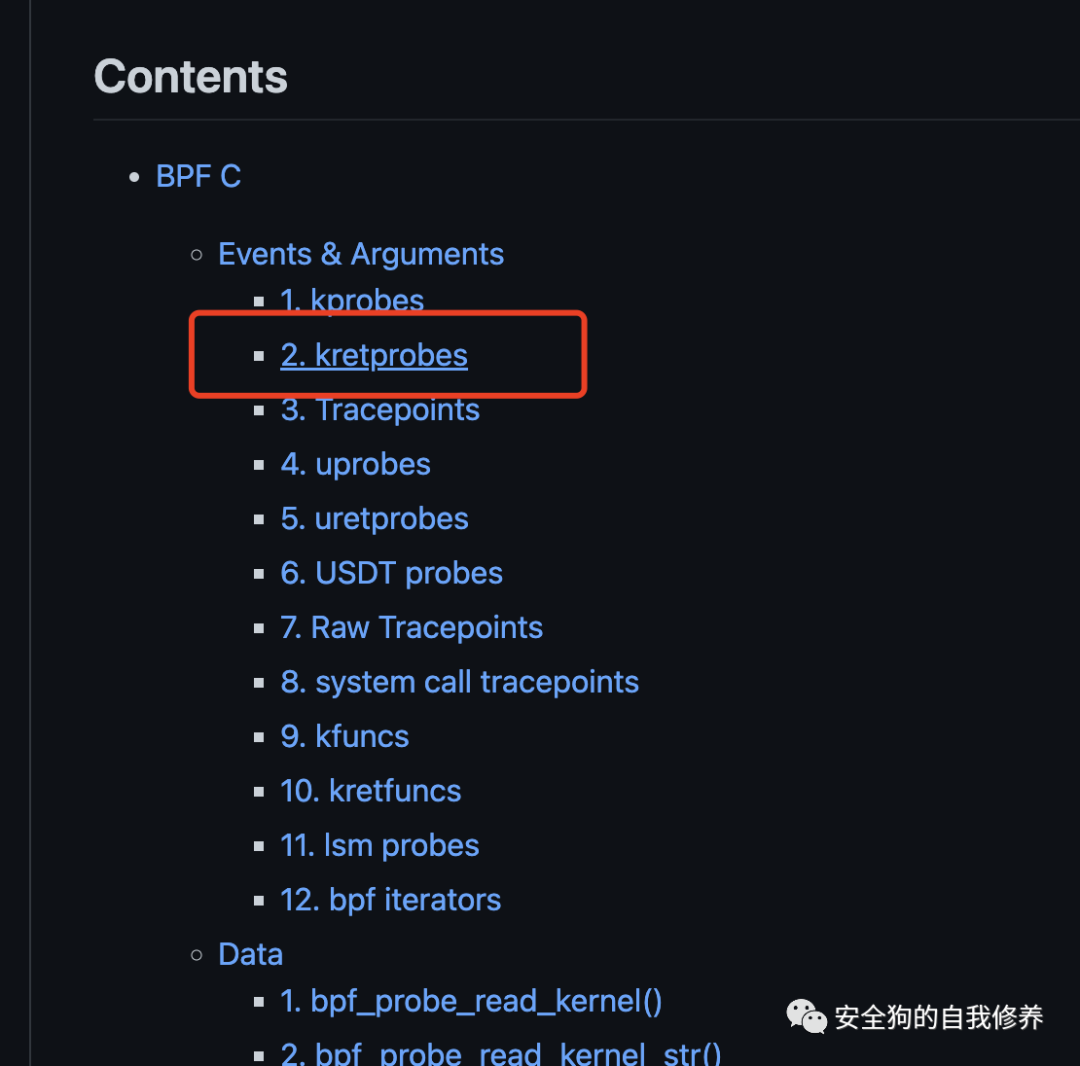
最近大部分的人都阳了,但既然活着能坚持就还得卷......
ebpf底层原理是很简单的,但基于hook框架做了很多事情,一个是有自己的程序空间(小操作系统那种),二个是大部分地方都能插桩,三个是支持动态静态插桩,四个是r3环跟r0环都能做,也就说他把我们常用的一些东西全集成于一身,然后做了非常多的扩展。
ebpf简单说了下,但是他的文档对初学者不是那么的友好,比如你要用一个接口:
看他的指导:
初学者你会被他带偏的,cpp的教程给你python例子(python做了更多的封装),反正我至少看到好几个Issues,里面问cpp怎么写的 ,当然你喜欢研究的话这都小场面,有文档不错了,这篇文章把bcc的前面部分全写了一个案例。
,当然你喜欢研究的话这都小场面,有文档不错了,这篇文章把bcc的前面部分全写了一个案例。
* 1. kprobes案例
* 2. kretprobes案例
* 3. Tracepoints案例
* 4. uprobes与uretprobes
* 5. USDT probes
* 6. Raw Tracepoints
* 7. syscall追踪
* 8. kfuncs与kretfuncs
* 9. lsm probes
* 10. 数据获取相关api使用
* 11. 参数与返回值修改
* 12. 日志输出
kprobes案例
#include <unistd.h>#include <fstream>#include <iostream>#include <string>#include "bcc_version.h"#include "BPF.h"//detach_kprobeconst std::string BPF_PROGRAM = R"(int my_tcp_send(struct pt_regs *ctx) {bpf_trace_printk("my_tcp_send hook !\n");return 0;})";int main() {ebpf::BPF bpf;auto init_res = bpf.init(BPF_PROGRAM);if (!init_res.ok()) {std::cerr << init_res.msg() << std::endl;return 1;}std::ifstream pipe("/sys/kernel/debug/tracing/trace_pipe");std::string line;std::cout << "Starting HelloWorld with BCC " << LIBBCC_VERSION << std::endl;auto attach_res = bpf.attach_kprobe("tcp_sendmsg", "my_tcp_send");if (!attach_res.ok()) {std::cerr << attach_res.msg() << std::endl;return 1;}while (true) {if (std::getline(pipe, line)) {std::cout << line << std::endl;// Detach the probe if we got at least one line.// auto detach_res = bpf.detach_kprobe(clone_fnname);// if (!detach_res.ok()) {// std::cerr << detach_res.msg() << std::endl;// return 1;// }// break;} else {std::cout << "Waiting for a sys_clone event" << std::endl;sleep(1);}}return 0;}
kretprobes案例
文章来源: http://mp.weixin.qq.com/s?__biz=MzkwOTE5MDY5NA==&mid=2247487126&idx=1&sn=06181d1b3f7a37136a3ec39b83222b13&chksm=c13f3ddff648b4c969a20aa26dcdfad88b10252bf3399ccf9f298ba9cb52962b241d11ef3dc9#rd
如有侵权请联系:admin#unsafe.sh
如有侵权请联系:admin#unsafe.sh